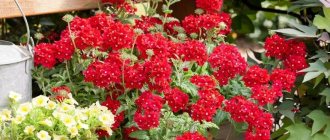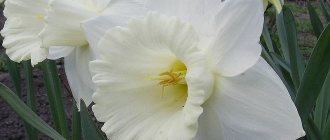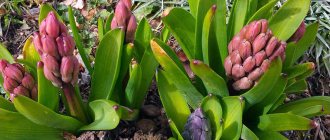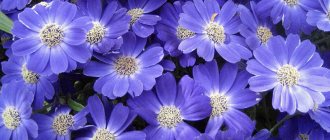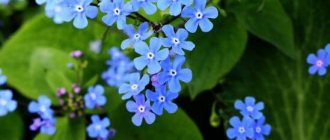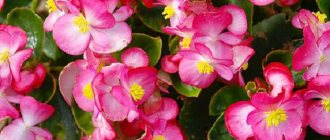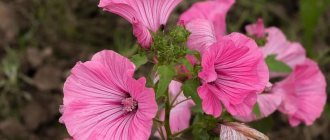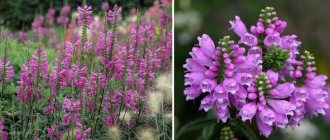These flowers are sometimes called Capuchins for their resemblance to a monk's hood.
The heat-loving perennial nasturtium, which came to our region from Central and South America, is grown as an annual plant. It has become very popular, and not only due to its unpretentiousness and bright colors.
If you want to learn more about this amazing plant and its cultivation, read this post.
Description of Nasturtium climbing
Nasturtium or capuchin belongs to the Nasturtium family and grows naturally throughout Latin America. This perennial vine has a succulent, strong stem from which numerous shoots arise. They reach up to 3.5 m in length.
The leaves of the crop are arranged alternately on the shoots, on long petioles. They have a lobed, shield-shaped or palmately divided shape. The edges of the plates are solid and wavy. The leaves are colored in light green tones, and light veins radiate from their center to the edge.
The flowering of the crop begins in June and lasts until September. At this time, single buds consisting of 5 petals are formed in the axils of the leaves. They resemble gramophones in shape and can be simple or terry. Depending on the variety, the petals are colored in red, pink, yellow and orange shades.
After flowering, fruits - achenes - are formed. As they ripen, they open and are divided into 3 separate seeds, which are used to propagate the crop.
There are about 80 varieties of climbing nasturtium.
But the following types are especially popular:
- Nasturtium tuberous. A herbaceous crop with shoots reaching up to 50 cm in length. It has green-blue, five-lobed leaves and red-yellow, gradient buds.
- Foreign nasturtium. The flexible shoots of the vine reach up to 3.5 m in length, and easily cling to any vertical supports. They are densely covered with light green corymbose-shaped leaves. The funnel-shaped buds of the variety reach up to 2 cm in diameter. The petals are colored yellow.
- Large nasturtium. The variety is distinguished by fragile stems, up to 2.5 m long. They are sparsely covered with round, dark green leaves located on long petioles. The buds of the plant are double or semi-double, reaching up to 6 cm in diameter. Based on the variety, many popular varieties have been bred: Alaska, Vesuvius, Salmon, King Theodore.
- Small nasturtium. A compact subshrub, the height of which does not exceed 35 cm. Its shoots are covered with shield-shaped, light green leaves. The buds of the crop reach up to 6 cm in diameter, and depending on the variety they can be simple or double.
general information
Nasturtium is a herbaceous flowering plant that came to us from South America, but has long been successfully acclimatized. There are about 90 species in nature, and many of them feel comfortable in mid-latitudes. They are valued for their elegant and long-lasting flowering, and also for their taste and healing properties.
In Russia, nasturtium is often called “capuchin”, and it came to us from the Netherlands. There are annual and perennial varieties, vines and subshrubs. Opened flowers always take on a bizarre irregular shape of at least five petals, and they are also very fragrant. Among red and yellow nasturtiums, other colors are extremely rare.
Photo: tuapsevesti.ru
Conditions for keeping plants in the garden
Climbing nasturtium (the photo in the garden clearly demonstrates the attractiveness of the plant) is an unpretentious crop. But it gains maximum attractiveness if certain conditions are created for it. And for this you will need to choose a good site for her and provide her with proper care.
Lighting
The liana is quite light-loving, and for planting it it is better to choose a well-lit place on the western or eastern side of the site. Partial shade is also suitable, but then the flowering of the crop will be less long and lush. But the foliage of the vine will acquire the most saturated color.
Temperature
Nasturtium is a heat-loving crop, and the vine develops best at temperatures of +18...+25 °C. But it can withstand even more intense heat, provided that it is watered and sprayed frequently. In this case, the crop dies when the temperature drops to 0 °C, even with good shelter. Therefore, it is customary to grow it as an annual.
Nasturtium can be preserved only in cases where it is grown in flowerpots. Then the plant will need to be brought into a warm room.
You can also transplant a garden crop into a pot, but this should be done long before the first frost. And it is necessary to accustom her to indoor conditions gradually. That is, you need to leave it outside during the day and bring it indoors at night.
Humidity
Climbing nasturtium (photos in the garden help to evaluate the attractiveness of the crop) does not require high air humidity. But sometimes it is useful to spray the leaves of the vine, then they will acquire a rich color.
Soil and drainage
Nasturtium does not make any special demands on the soil, but the culture develops best in light, fertile soil with a slightly acidic reaction.
The liana does not tolerate stagnant moisture at the roots, so it is not recommended to plant it in lowlands, wetlands and places with close soil. And it is also necessary to make drainage in the flowerbed. To do this, at a depth of 35-40 cm, you should lay out broken bricks, clay shards, sand, 2-3 cm thick.
Watering
From mid-spring to early summer, nasturtium requires regular and abundant watering. And depending on rainfall, you will need to moisten the soil under the vine 1-2 times a week.
During the formation of buds and flowering, the plant needs to be watered less frequently, and only after the top layer of soil has dried. During this period, excessive moisture will lead to rotting of the roots. It is better to water the plant with water slightly warmed in the sun. Otherwise, the roots of the vine may get sick from cold moisture.
1-2 hours after watering or rainfall, you should loosen the soil near the nasturtium. But this must be done carefully, since the roots of the culture are superficial. During this procedure it is also necessary to remove weeds. They not only draw nutrients from the soil, but also carry dangerous diseases.
Basic rules of care
The appearance of the plant with proper agricultural technology
Growing nasturtium is not a difficult task, but some rules should not be neglected.
During cultivation, the following techniques are used:
- Fertilizing: in the first stages of growth, nitrophoska is used, which is useful before flowering begins. Then they are fed with potassium and phosphorus fertilizers, based on their instructions. After flowering begins, additional nutrients are not required to be added to the soil. It is not recommended to introduce nitrogen, which leads to abundant growth of green mass.
- Planting in loamy, well-drained soils . Fresh organic fertilizers and lime are not used for this crop. An excess of nutrients has a bad effect on the development of the plant.
- Place in a sunny, open place, but not in the sun . You can plant a flower crop in partial shade, but this most often leads to elongation of the stems and a decrease in the number of flowers. The leaves become smaller and pale.
- Abundant watering during plant growth and moderate watering after flowering begins. Only after the earthen clod has dried, the soil is irrigated again. With strong moisture, a flower crop develops many leaves and few flowers; on heavy soil, the roots can rot. When placed near a pond, watering should be limited.
Droplets of water on leaves on a sunny day can cause burns.
Watering in sunny weather leads to burns on the leaf blades. Droplets of water on the leaves “work” like lenses, causing parts of the plant to overheat. With drip irrigation, nasturtium is watered in the evening.
- Removing dried and dead flowers, which significantly prolongs flowering time . This technique promotes the active formation of flower ovaries and the plant itself looks more well-groomed.
- Mulching not only retains moisture, but also keeps the soil layer loose . This eliminates the need for regular weeding and loosening.
- Control of weeds, especially perennials that have a powerful root system . To do this, carefully dig up the soil before planting, removing all roots. Next, the crop is periodically freed from weeds, and shallow loosening is carried out to remove the soil crust.
If necessary, you can collect seeds that remain viable for a long time - from 3 to 5 years. To do this, do not pick off the “old” flowers on one lash, waiting for the fruit to form. When the seeds turn whitish, they should be collected and spread out to dry.
Nasturtium is capable of self-sowing: the seeds ripen together and scatter on the ground. Even during frosts, they are well preserved in the soil and produce vigorous shoots the following year.
With the onset of autumn, watering is reduced to a minimum, and then stopped altogether . After the ground part has dried, the shoots are removed by cleaning and digging the soil. The “heat-loving beauty” cannot withstand winter, so in the spring it is sown again.
Step-by-step instructions for growing
Climbing nasturtium is easily grown from seeds, which can be planted directly into the flower bed. You need to start the activity at the end of May, when the risk of night frosts disappears. But first you need to prepare planting material. To do this, the seeds need to be filled with warm water (30-40 °C) for 24 hours.
During the sowing process you will need to follow these instructions:
- You should prepare the area and dig it to a depth of 30-40 cm.
- Having leveled the surface of the soil, it is necessary to make holes in it with a depth of 1.5-2 cm. If several specimens of the crop are planted, then a distance of 25-30 cm must be maintained between them.
- You need to place seeds in the holes, 2-4 pieces each. in each. The material will need to be sprinkled with soil.
- The planting should be watered.
The vine sprouts will appear within 10-15 days after sowing. But such seedlings will bloom only after 1-1.5 months. And to get earlier flowering, you should grow the vine using seedlings.
Growing seedlings
You need to start this event in the last ten days of April. The liana does not tolerate picking, and it is better to plant its seeds in peat cups.
In the process, you should adhere to the following algorithm:
- The containers should be filled with a mixture of peat and sand. To prevent future seedlings from dying from microbes and pests, the substrate must be spilled with a solution of fungicides.
- The soil surface needs to be leveled and holes made in it with a depth of 2 cm.
- It is necessary to plant plant seeds (2-3 pieces) in each container and sprinkle them with substrate.
- The planting should be sprinkled with warm water from a spray bottle and placed in a place with diffused but bright lighting.
In order for the seeds to germinate, you need to maintain the temperature around them within +20...+22 °C. You should also regularly moisten the soil to prevent it from drying out.
It is necessary to plant grown seedlings in a flowerbed in early June. In the process, you just need to place peat cups in recesses of a suitable size and sprinkle them with soil.
An interval of 30-40 cm should be maintained between vines. Then the soil should be well watered, and then its surface should be mulched with rotted straw, sawdust or peat.
Plant propagation methods, instructions
Climbing nasturtium, photos of which are presented in the article, propagates using cuttings. This method takes a lot of time, and should only be used if you want to get a new, terry type of vine. But for this event you can only use those specimens that are grown in pots and not in the garden.
Reproduction should begin in April, and during the process you must adhere to the following instructions:
- First you need to prepare a planting container with drainage holes. You also need to stock up on sand. It needs to be washed, dried, and then heated in a frying pan for 10-15 minutes. Once the sand has cooled, they need to fill the planting container.
- Having chosen strong, healthy shoots, you should cut them with a sharp and disinfected knife.
- The cuttings need to be planted in moistened sand, deepening them by 2-3 cm.
In order for plants to take root, it is important to keep the substrate moist. Therefore, it must be regularly sprayed with warm water from a spray bottle. Plants can be planted in a flowerbed in the last ten days of May, when the risk of return frosts has disappeared.
Why does the plant dry out and turn yellow?
Over time, the lower leaves of the vine turn yellow and die. And this happens for natural reasons. But if the leaves from the top of the crop dry out, this can be caused by a lack of nutrients in the soil.
And to correct the situation, it is enough to feed the vine with complex mineral fertilizer.
Pest and disease control
Nasturtium is a plant with strong immunity, but in unfavorable conditions it can be affected by the following diseases:
| Causes and symptoms | Treatment | |
| Gray rot | The disease develops at high humidity. The disease can be recognized by dry grayish spots that form on the leaves and stems of the vine. | Damaged parts of the crop will need to be cut out. It is advisable to sprinkle the cut areas with crushed charcoal. The liana should be treated with a fungicide, for example, “Fundazol”, “Fitosporin-M” or “Alirin-B”. |
| Bacterial wilt | The main source of the disease is weeds. You can recognize it by the fading lower leaves. Over time, the plant dies. | There is no cure for bacterial wilt. But to prevent the disease from spreading to healthy plants, it is important to immediately dig up the diseased specimen and destroy it away from the flowerbed. |
| Mosaic | The disease is spread by weeds and pests. Affected plant leaves become covered with small yellow and green spots. | In the early stages, the disease can be cured if all affected parts of the culture are immediately removed, capturing some healthy tissue. Next, you should treat the culture with Karbofos solution. In case of severe damage, the plant must be removed so that the disease does not spread to healthy specimens. |
| Rust | The causative agents of the disease are carried by wind and pests. When affected, the leaves of the plant become covered with raised, orange spots, which increase in volume over time. | At the first symptoms, it is necessary to treat the plant with fungicides, such as Fitosporin, Topaz or Baktofit. |
Of the pests, the vine is attacked by the following insects:
- Aphid. Pests feed on the sap of stems and leaves and damage flower stalks. If the colony of insects is small, then it is enough to dust the vine with wood ash. In case of severe damage, you will need to spray the crop with a solution of Decis or Confidor.
- Cabbage moth. A small butterfly whose caterpillars damage the leaves and buds of the plant. You can kill insects using garlic or onion infusion. Dusting the vine with wood ash also helps. Among insecticides, the preparations “Decis Expert” and “Confidor” effectively destroy parasites.
- Medvedka. A large insect that eats both the above-ground part of the vine and its roots. To destroy the pest, you will need to place poisonous baits near the plant.
- Spider mites. Small pests that can be recognized by the sticky web covering the axils of the leaves and stems of the plant. To destroy parasites, the vine should be treated with the preparations “Kleschevit”, “Fitoverm”, “Fufanon”.
Fertilizers for plants
Nasturtium actively develops and blooms luxuriantly with regular feeding. But it is advisable to apply preparations to the soil of the flowerbed no more than 2-3 times a month, and only during the active growing season. And when the vine begins to form buds and bloom, fertilizing should be completely canceled.
Mineral mixtures
During the growth of green mass, nasturtium should be fed with potassium-phosphorus fertilizers, with a minimum nitrogen content. Suitable potassium monophosphate, preparations "Agricol", "Atlante", AVA, "Fertika".
Fertilizers should be applied only after heavy watering, in the early morning or late evening. Otherwise, the drugs will cause a burn at the roots of the plant.
Organic fertilizers
It is not advisable to use organic matter, especially fresh manure, to feed nasturtium. Such fertilizers lead to rotting of the roots. But you can mulch the surface of the flowerbed with compost.
Such a layer will feed the plant with useful substances, and at the same time prevent the rapid evaporation of moisture and compaction of the soil. So you will need to water and loosen the soil less often.
Possible difficulties in growing
Climbing nasturtium (photos in the garden are shown to clearly demonstrate the attractiveness of the culture) is a non-capricious plant. And problems with it can only arise in case of irregular watering.
Moreover, the vine does not tolerate both excessive moisture and prolonged drought. And in these cases, it begins to shed its leaves. Sometimes the vine refuses to bloom.
And this can be caused by several reasons:
- Excess nitrogen in the soil. The plant needs to be fed with potassium-phosphorus fertilizers, since nitrogen provokes the growth of green mass, and not the formation of buds.
- Dense landing. When planting several vines, you need to maintain an interval of 35-40 cm between them. Otherwise, the plants will waste energy on competition.
- Lack of light. For the formation of nasturtium buds, a sufficient amount of sunlight is necessary. So it is worth planting the crop in illuminated areas.
Selecting a location
When choosing a place to grow nasturtium, there are two conflicting factors to consider. On the one hand, the flower loves places open to the sun, on the other hand, it is afraid of winds. In the shade, flowering will be faded and sparse, and when there are gusts of wind, the stems break very easily. Regarding the soil, the wishes boil down to good drainage, light structure and low acidity. You should not overly stuff the soil with organic matter, this will give an undesirable advantage towards green mass instead of flowering. But too poor lands will not give the desired result. The foliage will be small, and the planting will look half-bald, with the soil showing through.
Nasturtium seedlings grown in low light conditions subsequently suffer for a long time after being transplanted into the ground and may not produce color.
Use in landscape design, examples
Climbing nasturtium is often planted along fences. The culture grows quickly and in a short time covers their surface, becoming a kind of hedge. Such a fence looks especially impressive if, when planting, you alternate varieties of vines with different shades of buds.
An example of the use of climbing nasturtium on the site.
The vine can also be used for landscaping gazebos and any vertical supports. And behind its dense thickets you can easily hide unsightly buildings. Climbing nasturtiums are also planted in hanging pots. You can decorate a veranda or balcony with such compositions.
Perennial varieties in winter greenhouse or warm balcony
Even perennial varieties of nasturtiums do not tolerate winter, frost and low temperatures. They are usually moved indoors for the winter. If the balcony is warm enough (the temperature does not drop below +7˚), you can leave this flower over the winter.
You can also organize a greenhouse and grow flowers there.
Attention! You should not leave nasturtiums on the balcony for the winter.
Where to buy and cost of the plant
Nasturtium seeds can be purchased in flower shops, special departments of supermarkets, and online resources. But before purchasing planting material, you must always check its expiration date. And it is worth considering that vine seeds lose their viability 4-5 years after collection.
The cost of planting material is low. And on average, you will have to pay 25-50 rubles for a package of plant seeds.
An attractive climbing nasturtium will be an excellent choice if you need to quickly create a hedge on your garden plot or hide an unsightly place in the garden behind dense, flowering thickets. This vine looks very impressive, which is confirmed by numerous photos, and at the same time does not require much attention.
Collecting seeds
Capuchins are one of those rare crops from which you can collect seeds without having to buy them every year. In addition, they are well stored for several years and will not lose their viability.
To obtain seeds, leave one vine from which the dried flowers are not removed, where the seeds are formed. They are large and green. When ripe they turn whitish. The seeds ripen 40-50 days after the flower fades.
Nasturtium seeds can be collected independently and planted in subsequent years.
Seeds are collected without waiting for them to scatter on the soil (self-seeding occurs). Ripening takes place in a warm, ventilated room. After the seed has dried, it is placed in paper bags and stored until next spring at room temperature.
With thoughtful, correct placement, nasturtium will give the area a bright and elegant look throughout the summer, without requiring any special care from you. She is unpretentious and copes with many difficulties on her own, and the task of the gardener is only to help her a little with this.
